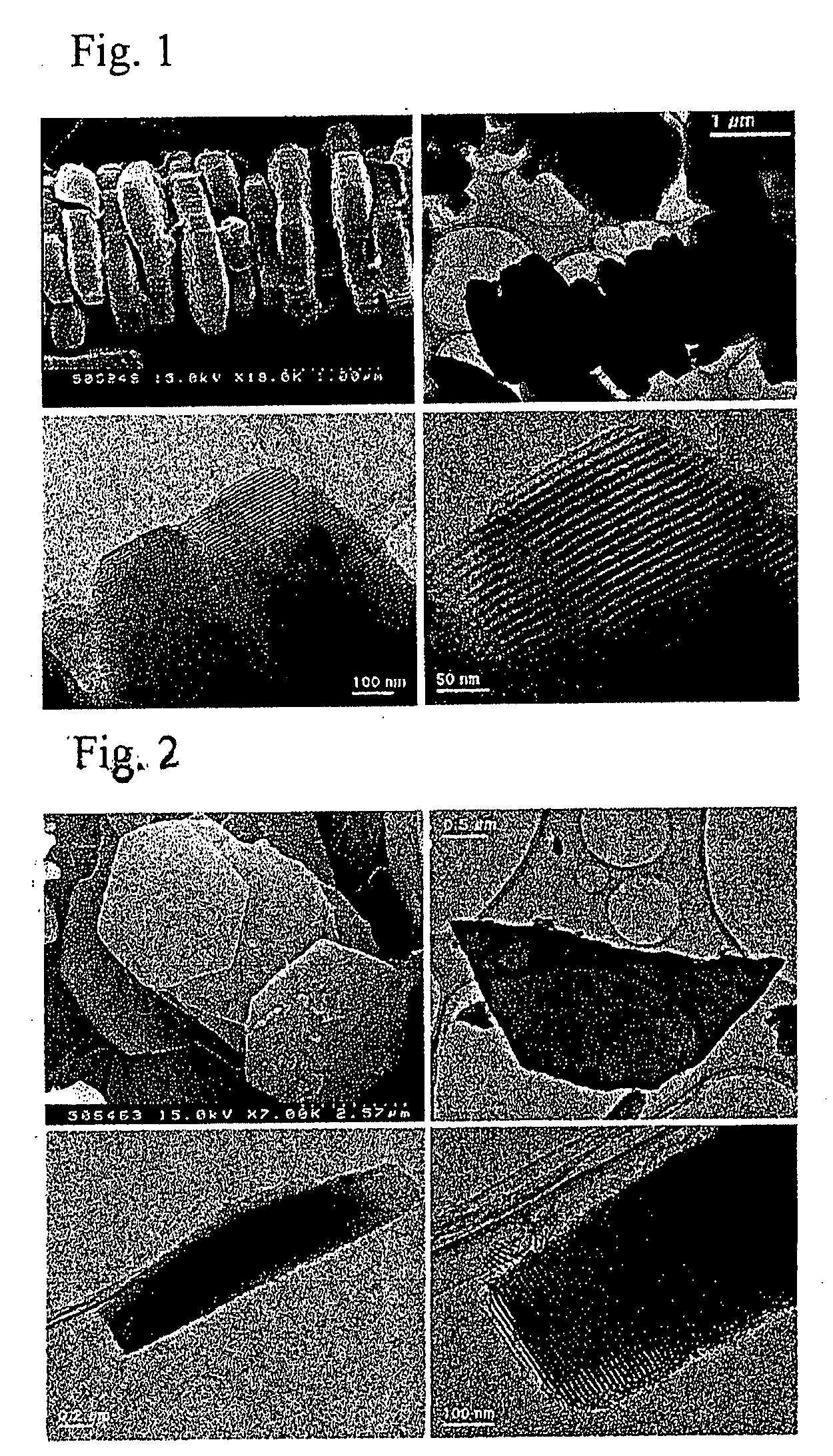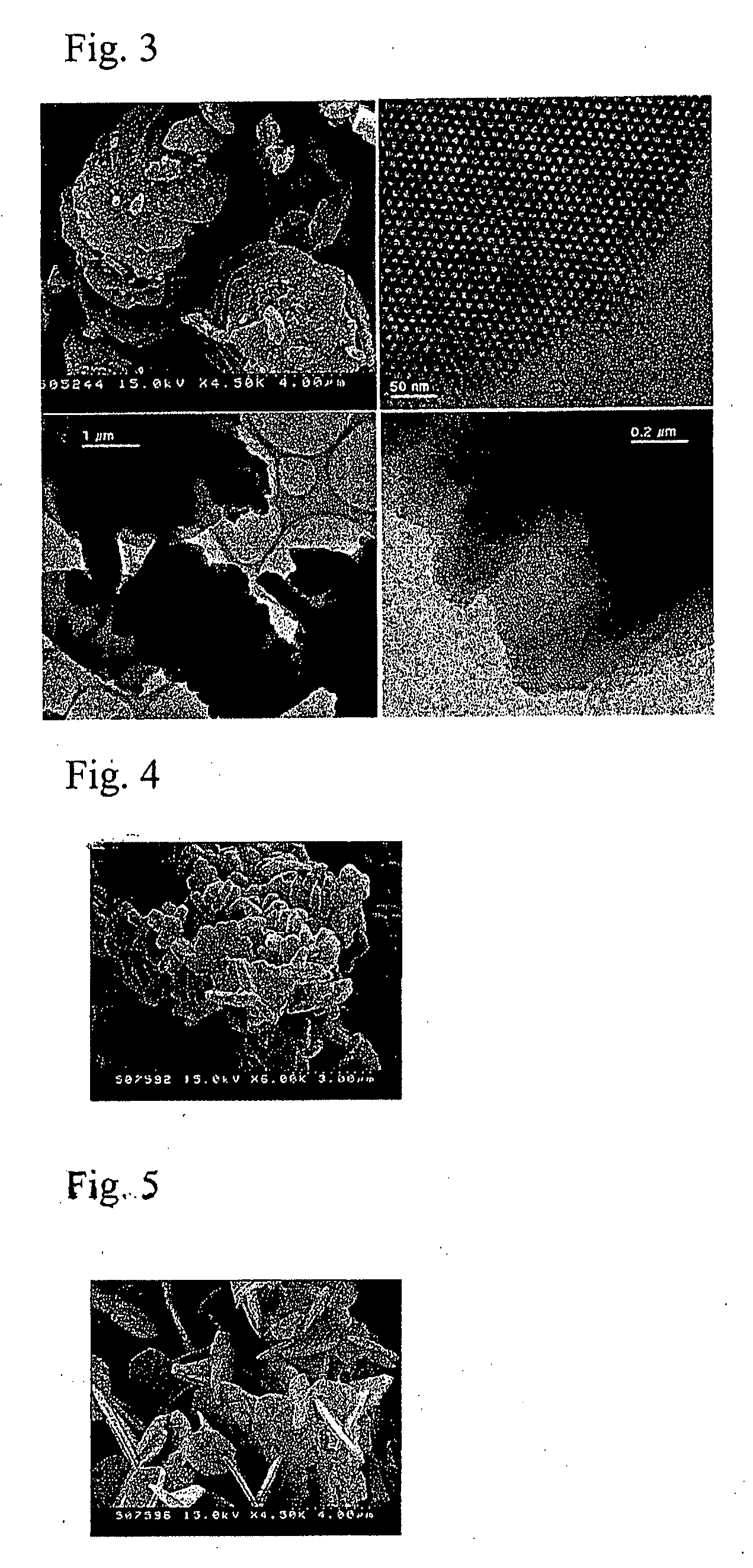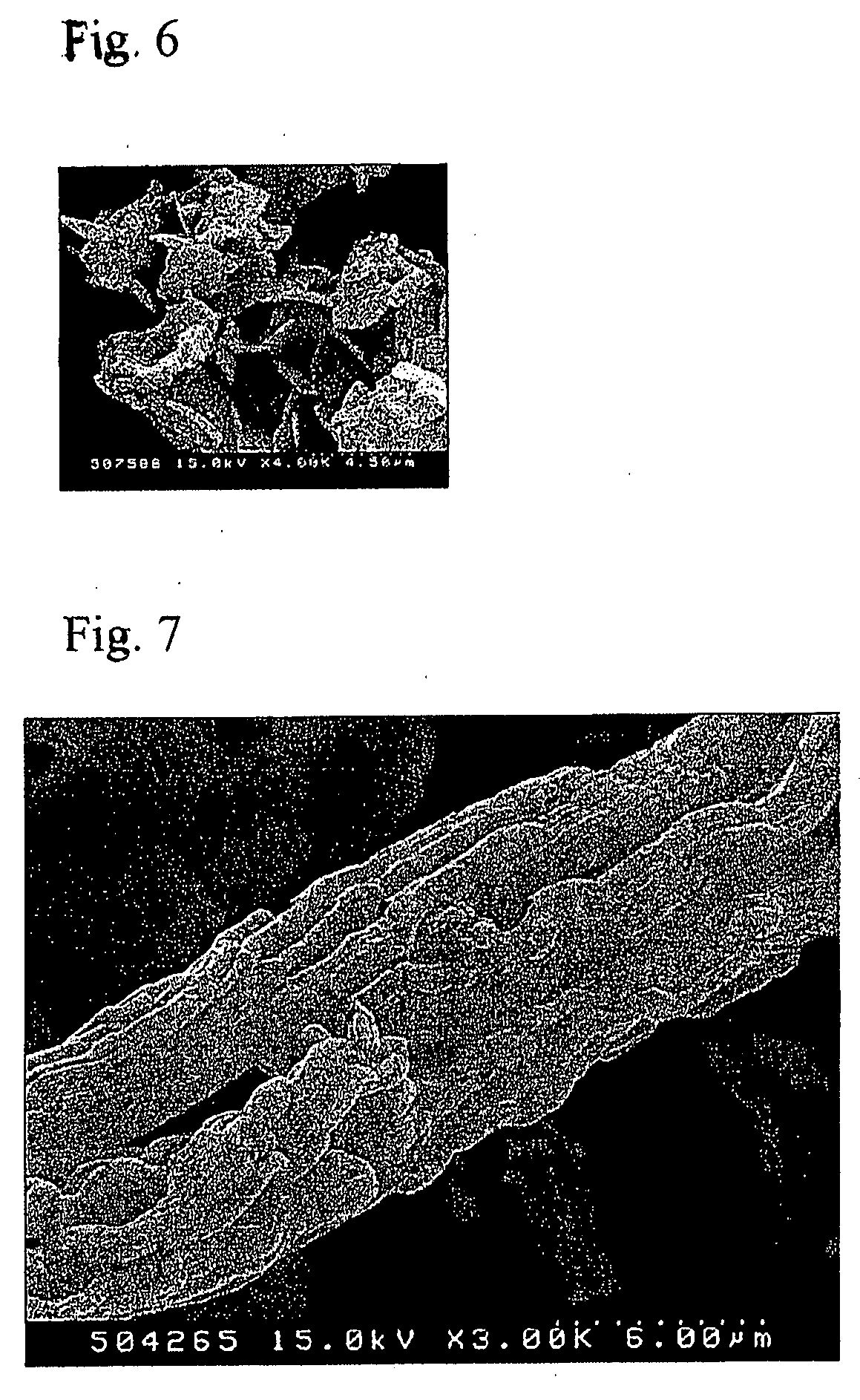Amino-Functionalized Mesoporous Silica
- Summary
- Abstract
- Description
- Claims
- Application Information
AI Technical Summary
Benefits of technology
Problems solved by technology
Method used
Image
Examples
example 1
[0043]Preparation of Amino-Functionalized Silica Having 0.05 Molar Ratio of Amine to Silica
[0044]16 g of 10% (w / w) aqueous solutions of P123 were poured into 26.6 g distilled water and then 4.32 g of sodium silicate and 0.18 g of aminopropyltriethoxysilane were added to the reaction mixtures. The mixtures were vigorously stirred, preferably by using mechanical stirrers, at room temperature until homogenous solutions were obtained. The vigorously stirred solutions were acidified with concentrated hydrochloric acid to the acid concentration 2 M. The final mixtures were stirred for 2 hour at 40° C. then subjected to microwave heating for co-condensation reaction and crystallization as following. The reactive gel was filled into Omni Teflon vessel and subjected to microwave irradiation. The microwave condition for co-condensation reaction and crystallization was set under a static condition at 100° C. for 2 h with operating power of 300 W (100%). The crystallized products were filtered,...
example 2
[0046]Preparation of Amino-Functionalized Silica Having 0.075 Molar Ratio of Amine to Silica
[0047]Example 2 is carried out in the same way as Example 1 except that 4.21 g of sodium silicate and 0.27 g of aminopropyltriethoxysilane instead of 4.32 g of sodium silicate and 0.18 g of aminopropyltriethoxysilane were added to the reaction mixtures.
[0048]The SEM and TEM analysis reveal that the material has short mesopore at the range of 150 nm as FIG. 2. The crystal shape is a medium thick hexagonal platelet (hexagonal disk). This material has BET surface area of 733 square meters per gram, pore volume of 1.22 centimeter cubic per gram and pore size of 10.8 nanometers by the nitrogen adsorption-desorption analysis based on Barrett, Joyner and Halenda method. The material has incorporated amino group equal to 1.17 millimole per gram as revealed by CNHS elemental analysis.
example 3
[0049]Preparation of Amino-Functionalized Silica Having 0.1 Molar Ratio of Amine to Silica
[0050]Example 3 is carried out in the same way as Example 1 except that 4.09 g of sodium silicate and 0.35 g of aminopropyltriethoxysilane instead of 4.32 g of sodium silicate and 0.18 g of aminopropyltriethoxysilane were added to the reaction mixtures.
[0051]The SEM and TEM analysis reveal that the material has short mesopore at the range of 100˜150 nm as FIG. 2. The crystal shape is a thin hexagonal platelet (hexagonal chip). This material has BET surface area of 680 square meters per gram, pore volume of 0.94 centimeter cubic per gram and pore size of 9.0 nanometers by the nitrogen adsorption-desorption analysis based on Barrett, Joyner and Halenda method. The material has incorporated amino group equal to 1.34 millimole per gram as revealed by CNHS elemental analysis.
PUM
| Property | Measurement | Unit |
|---|---|---|
| Length | aaaaa | aaaaa |
| Length | aaaaa | aaaaa |
| Length | aaaaa | aaaaa |
Abstract
Description
Claims
Application Information
 Login to View More
Login to View More - R&D
- Intellectual Property
- Life Sciences
- Materials
- Tech Scout
- Unparalleled Data Quality
- Higher Quality Content
- 60% Fewer Hallucinations
Browse by: Latest US Patents, China's latest patents, Technical Efficacy Thesaurus, Application Domain, Technology Topic, Popular Technical Reports.
© 2025 PatSnap. All rights reserved.Legal|Privacy policy|Modern Slavery Act Transparency Statement|Sitemap|About US| Contact US: help@patsnap.com



